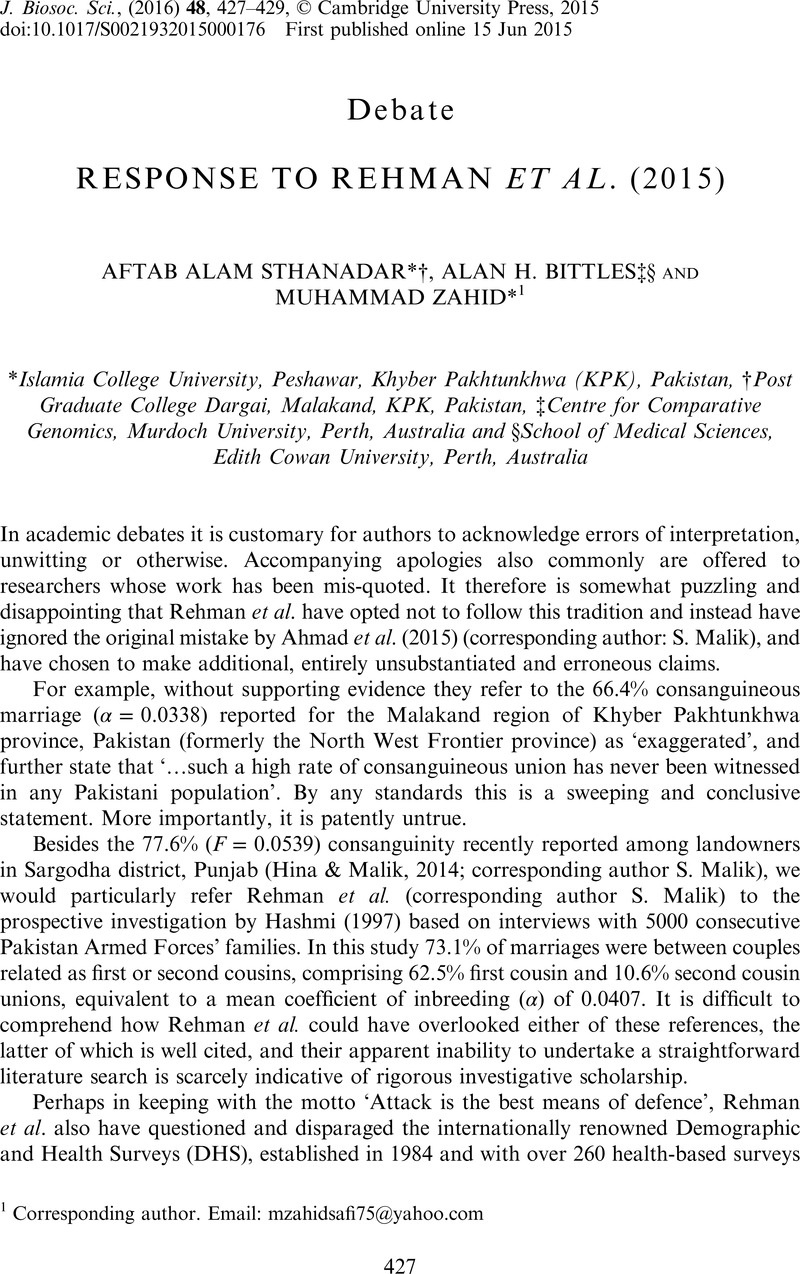No CrossRef data available.
Article contents
RESPONSE TO REHMAN ET AL. (2015)
Published online by Cambridge University Press: 15 June 2015
Abstract
An abstract is not available for this content so a preview has been provided. Please use the Get access link above for information on how to access this content.

- Type
- Debate
- Information
- Copyright
- Copyright © Cambridge University Press, 2015
References
Ahmad, B., Rehman, A. U. & Malik, S. (2015) Consanguinity and inbreeding coefficient in tribal Pashtuns inhabiting the turbulent and war-affected territory of Bajaur Agency, north-west Pakistan. Journal of Biosocial Science
doi: 10.1017/S0021932014000558.Google Scholar
Bittles, A. H. (2012) Consanguinity in Context. Cambridge University Press, Cambridge.Google Scholar
Corsi, D. J., Neuman, M., Finlay, J. E. & Subramanian, S. V. (2012) Demographic and health surveys: a profile. International Journal of Epidemiology
41, 1602–1613.Google Scholar
Fabic, M. S., Choi, Y. J. & Bird, S. (2012) A systematic review of Demographic and Health Surveys: data availability and utilization for research. Bulletin of the World Health Organization
90, 604–612.Google Scholar
Hashmi, M. A. (1997) Frequency of consanguinity and its effect on congenital malformation – a hospital based survey. Journal of the Pakistan Medical Association
47, 75–78.Google Scholar
Hina, S. & Malik, S. (2014) Pattern of consanguinity and inbreeding coefficient in Sargodha District, Punjab, Pakistan. Journal of Biosocial Science
doi: 10.1017/S0021932014000431.Google ScholarPubMed
Rehman, A. U., Ahmad, I., Zaman, M. & Malik, S. (2015) Transition in consanguinity in Dir Lower district, a victim of war, natural disaster and population displacement, in north-west Pakistan – response to Sthanadar et al. (2015). Journal of Biosocial Science
doi: 10.1017/S0021932015000152.Google Scholar
Sthanadar, A. A., Bittles, A. H. & Zahid, M. (2014) Civil unrest and the current profile of consanguineous marriage in Khyber Pakhtunkhwa Province, Pakistan. Journal of Biosocial Science
46(5), 698–701.Google Scholar
Sthanadar, A. A., Bittles, A. H. & Zahid, M. (2015) Increasing prevalence of consanguineous marriage confirmed in Khyber Pakhtunkhwa Province, Pakistan. Journal of Biosocial Science
doi: 10.1017/S0021932015000164.Google ScholarPubMed




